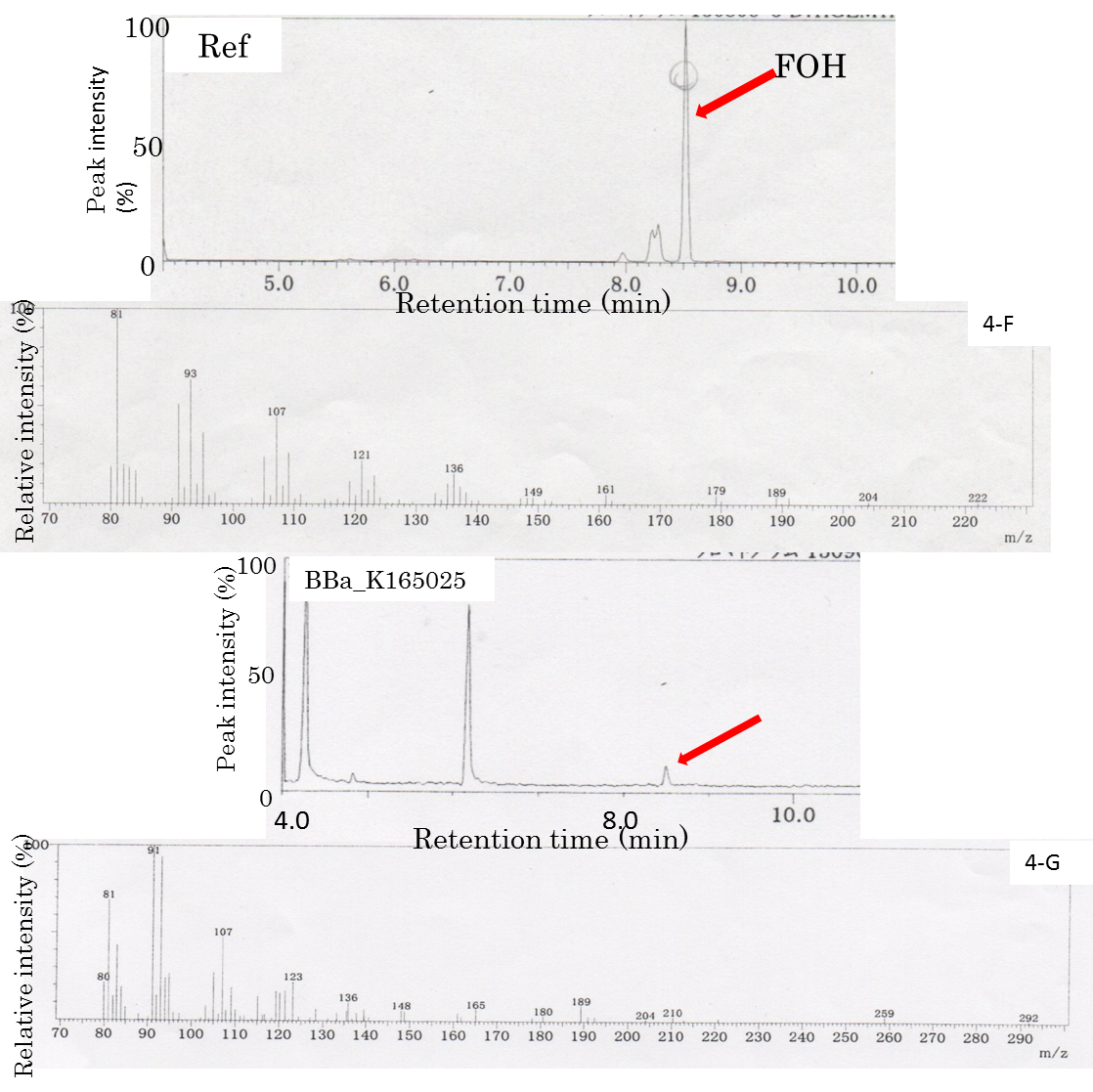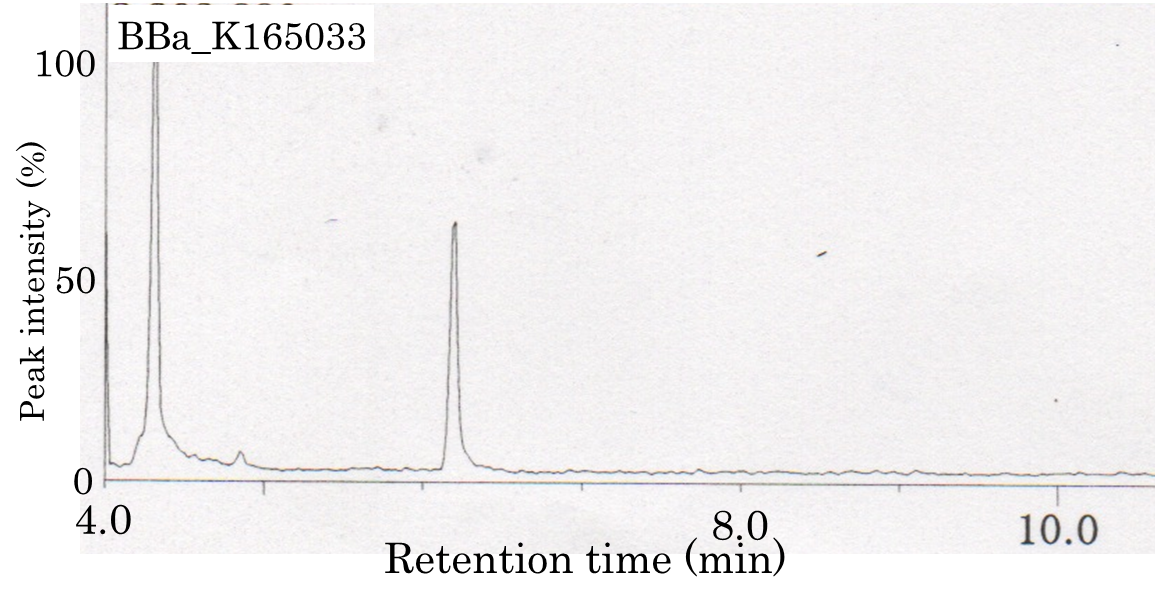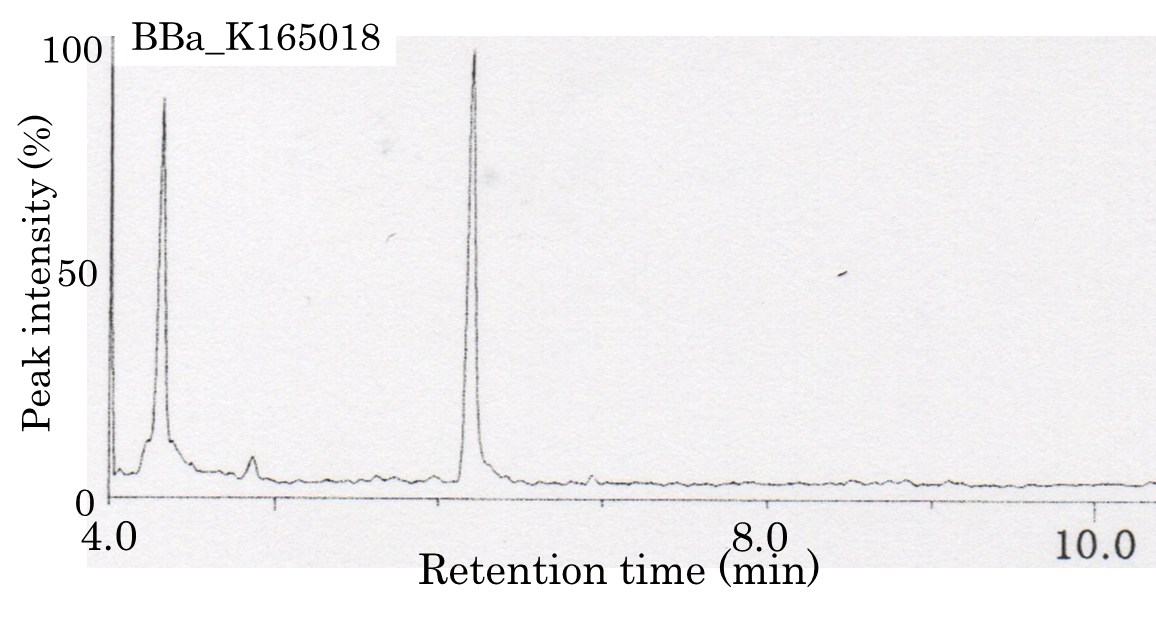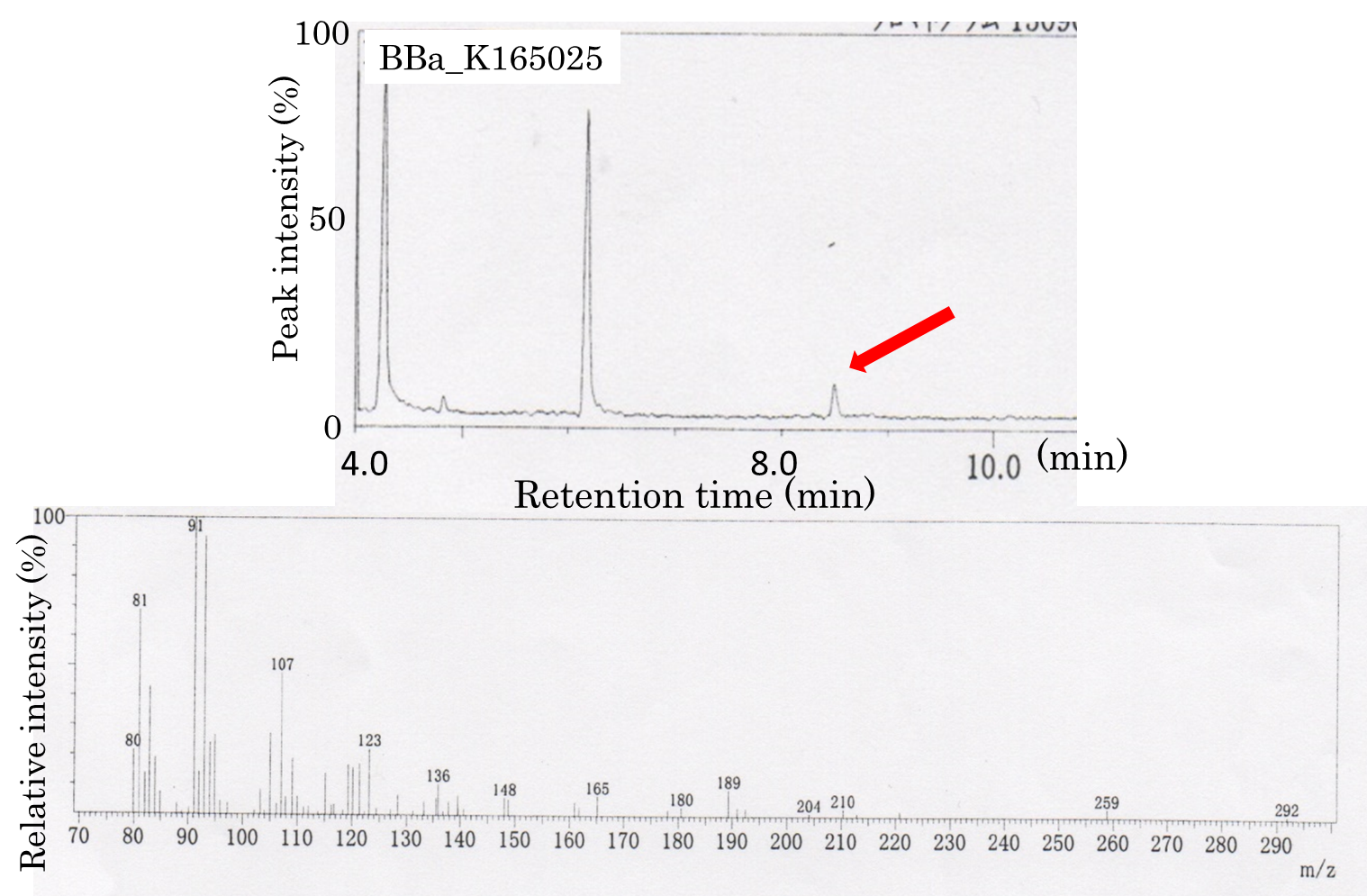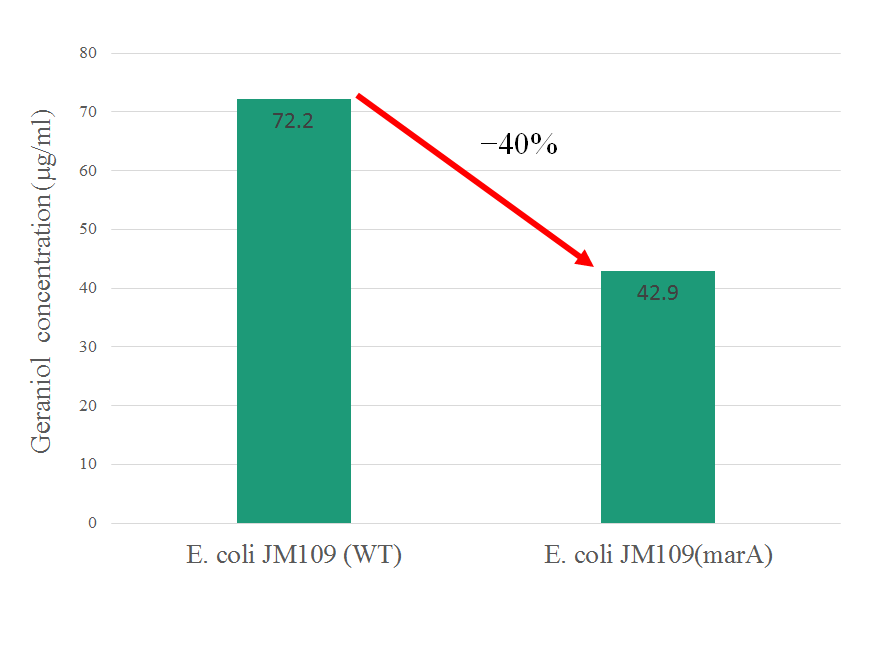Team:Nagahama/Medal Parts
Contents
Medal parts
銅
銀
New Part2
ispA+MEP.dev[http://parts.igem.org/wiki/index.php?title=Part:BBa_K1653025]
λPL+r.b.s.+ispA+MEP+×× (r.b.s.+dxs+r.b.s.+m-idi+r.b.s.+ispDF)
FOH is probably generated through FPP hydrolysis by endogenous phosphatases, which are induced by an increased intracellular FPP level (Asadollahi et al., 2008; Muramatsu et al., 2008a). Analogously, we hypothesized that E. coli could produce FOH under cellular conditions of an increased intracellular FPP level through metabolic engineering. A MEP pathway has been shown to synthesize IPP and DMAPP efficiently in E. coli (Martin et al., 2003). Because of its high hydrophobicity and low volatility, decane was chosen to extract and solubilize FOH from culture broth. The decane overlay in the two-phase culture did not affect growth, and FOH could be solubilized in the decane phase with negligible volatile loss. We adopt 1 mL of decane overlaid to 5 mL of culture broth. Two-phase culture of E. coli JM109 (Bba_K165025) was carried out in 2YT medium containing 1% glycerol at 29°C for 48 h. The decane phase of the two-phase culture was collected to analyze the FOH content by GC-MS. In the GC-MS analysis (Fig. 4A-G), there was a main peak at 8.5 min in the collected decane phase sample, which corresponded to the reference solution of the standard FOH compound dissolved in decane. Mass spectrometry confirmed that the peak at 8.5 min was FOH (Fig. 4-A). However, the peak was not observed in two-phase culture without introducing BBa_K165025. The formation of FOH from FPP was further confirmed by blocking FPP synthesis. In the GC-MS, the FOH peak was observed in E. coli JM109 (BBa_K165025) culture, whereas no peak was observed with transformed E. coli JM109. It was found that FOH need not only ispA(BBa_K165018) but also MEP(BBa_K165024) in E. coli.We submit new part(BBa_K165025) as producing FOH.
Gas Chromatography/Mass(GC/MS)
The FOH standard solution (Ref) was used as a control. The peak corresponding to the FOH standard at 8.5 min is indicated by an arrow. The peak at 8.5 min was applied to GC/MS. The FOH standard solution (Ref) was used as a control. E. coli JM109(Bba_K165025) were compared with respect to FOH formation using GC-MS.
金
The recombinant E. coli was cultured aerobically at 30℃ in LBGMg medium. When the cell growth (OD660) reached 1.5, serial ten-fold dilutions(10‐¹~10⁻⁵) of the culture. Each cell suspension of 5µl was spotted onto LBGMg agar plate and then overlaid with different terpenoid solutions 3ml. The plates were sealed and incubated at 30°C for 24 h. Hexane was used as a dilution solvent.
E. coli were inoculated in LBGMg liquid medium and incubated under shaking condition of 250 rpm at 30°C. When the cell growth (OD660) reached 1.0, the culture was overlaid with 1.0%(v/v) geraniol solutions in 10% volume of culture broth and cultivated at 250 rpm and 30°C in shaking incubator overnight. Hexan uesed geraniol dillution. Cells were harvested from the culture broth by centrifugation at 13,000 rpm for 10 min and then washed with 1.0 ml saline solution (0.7%(w/v)) containing 10 mM MgSO4. The cells were resuspended in 1.0 ml of the same washing solution. Intracellular geraniol was extracted by addition of an equal volume of chloroform to the cell suspension and then agitation at 200 rpm for 90 min at 25°C . The chloroform extract was analyzed by gas chromatography to measure the amount of geraniol penetrated into the cells. The oven temperature was initially maintained at 80°C for 1 min, then raised with a gradient of 10°C/min to 250°C and was kept up to 30°C.
Intracellular geraniol concentration were 72.2µg/ml (E. coli JM109 (WT)) and 42.9µg/ml (E. coli JM109 (marA) ). The recombinant E. coli overexpressing marA decrease intracellular geraniol 40% against WT. Overexpressing marA activates AcrAB-TolC effluxpump transport some antibiotics and organic solvent. As a resulting, we confirmed that overexpressing of marA activates transport geraniol from intracellular to the cell outside.
(Gold Medal) Exsing part's information of marA, it gives E. coli resistance against kanamycin only. So we improved the characterization of a previously existing BioBrick Part in our study. http://parts.igem.org/wiki/index.php?title=Part:BBa_K1230004 Part's number BBa_K1230004
NOTE
Note
In order to be considered for the Best Part Collection award, you must fill out this page.
Did your team make a lot of great parts? Is there a theme that ties all your parts together? Do you have more than 10 parts in this collection? Did you make a CRISPR collection, a MoClo collection, or a collection of awesome pigment parts? Describe your parts collection on this page, so the judges can evaluate you for the Best Part Collection award.



